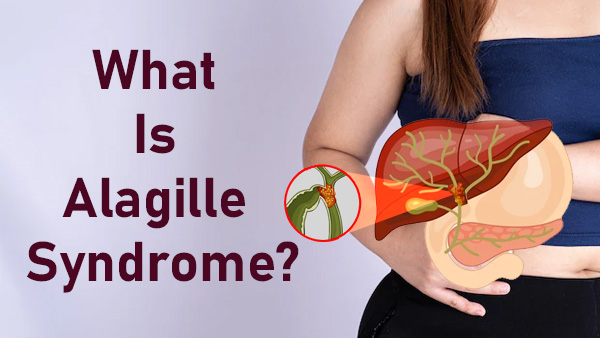Just In
- 1 hr ago

- 3 hrs ago

- 4 hrs ago

- 4 hrs ago

Don't Miss
- Technology
 Gigabyte Unveils AORUS CO49DQ: A Curved QD-OLED Gaming Monitor for Immersive Entertainment
Gigabyte Unveils AORUS CO49DQ: A Curved QD-OLED Gaming Monitor for Immersive Entertainment - Education
 Maharashtra Class 10th Result 2024 to be Released Soon; Check Minimum Marks Required to Qualify Maharashtra SS
Maharashtra Class 10th Result 2024 to be Released Soon; Check Minimum Marks Required to Qualify Maharashtra SS - Finance
 1:10 Split, 5 Bonus, 70% Dividend: Crorepati Defene PSU Hits New High, 108605% Returns; BUY For Long Term
1:10 Split, 5 Bonus, 70% Dividend: Crorepati Defene PSU Hits New High, 108605% Returns; BUY For Long Term - Movies
 Deadpool & Wolverine Cast Fees: Ryan Reynolds' Salary 150% HIGHER Than Hugh Jackman; Guess MULTI-CRORE Fees
Deadpool & Wolverine Cast Fees: Ryan Reynolds' Salary 150% HIGHER Than Hugh Jackman; Guess MULTI-CRORE Fees - Sports
 DC vs GT My11Circle Prediction IPL 2024 Match 40: DEL vs GUJ Fantasy Tips & Expert Picks
DC vs GT My11Circle Prediction IPL 2024 Match 40: DEL vs GUJ Fantasy Tips & Expert Picks - News
 Tamil Nadu Weather Update: 9 Districts Over 40°C, Salem Boils At 42.3°C; Heatwave Warning Issued
Tamil Nadu Weather Update: 9 Districts Over 40°C, Salem Boils At 42.3°C; Heatwave Warning Issued - Travel
 Mumbai Opens BMC Headquarters For Exclusive Heritage Tour
Mumbai Opens BMC Headquarters For Exclusive Heritage Tour - Automobiles
 The Rise and Fall of the TVS Jive: India's Pioneering Clutchless Motorcycle
The Rise and Fall of the TVS Jive: India's Pioneering Clutchless Motorcycle
What Is Alagille Syndrome? Causes, Symptoms, Diagnosis And Treatment
Alagille syndrome or ALGS is a rare genetic disorder that can affect multiple organ systems in the body, including the liver, skeleton, heart, eyes and kidneys. It is also known by names such as Alagille-Watson syndrome and arteriohepatic dysplasia. [1]

The syndrome is mainly characterised by the buildup of bile in the liver, leading to liver damage. The symptoms and severity of the condition can vary greatly from one individual to another, even within the same family. Some people may have mild forms of ALGS, while others have more severe forms.
Take a look at the details of Alagille syndrome.

Causes Of Alagille syndrome
Alagille syndrome is mainly caused by mutations in the JAG1 gene (in 90 per cent of cases), the NOTCH2 gene and small deletions of gene on chromosome 20 that include the JAG1 gene.
The two genes, JAG1 and NOTCH2, code for Notch signalling between neighbouring cells during embryonic development. This signalling influences how cells in the developing embryo body may be structured. Mutation of these genes is likely to disrupt the Notch signalling pathway and cause errors in development, notably in the bile ducts, heart, spinal column and certain facial features. [2]
Some of the abnormalities due to gene mutation may include narrow, malformed and the formation of insufficient bile ducts that help digest fats and fat-soluble vitamins. This symptom may be followed by severe heart and lungs problems.

Symptoms Of Alagille syndrome
Some of the symptoms of alagille syndrome may include: [3]
- Yellowing of the skin and eyes.
- Pale, gray or white stool.
- Jaundice in the newborn.
- Delay in growth and development.
- Itchy skin [4]
- Palpitation of the heart.
- Hard cholesterol bumps on the skin.
- Facial characteristics like wide forehead, small chin, straight nose and deep eyes during infancy.
- Insufficiency of the kidneys.
- White ring in the eyes. [5]
- Enlarged spleen
First Death Of A Child Reported In Mexico Due To Mysterious Severe Hepatitis: Things To Know
Diagnosis Of Alagille syndrome
The symptoms of many conditions overlap with alegille syndrome. Therefore, a medical expert must rule out other conditions first. Some of these conditions may include neonatal hepatitis, extrahepatic biliary atresia and cystic fibrosis.
To diagnose alagille syndrome, a medical expert may look for physical symptoms like yellowing of the skin, followed by:
- Liver biopsy: To check for the proper functioning of the liver and bile. [6]
- Screening of heart and blood vessels: Along with tests related to bile, diagnosis of heart and blood vessels may help identify complications of the condition. [7]
- Blood test: To check for fat-soluble vitamin deficiency and the functioning of the liver.

Treatment Of Alagille syndrome
The treatment of alagille syndrome is customised based on the age, complications, severity and other factors of the patient. Some of the treatment methods may include:
- Medications: To improve the flow of bile from the liver and reduce symptoms like itching.
- Surgery: It includes liver transplantation in people with severe alagille syndrome. [8]
- Vitamin supplements: In the case of deficiency of soluble vitamins like A, D and K.
How Does The Body Convert Carbohydrates Into Energy?
To Conclude
Alagille syndrome is a lifelong condition and babies born with the condition have to work closely with medical experts to reduce their symptoms and improve their quality of life. Genetic testing can help reduce the risk of the condition in future generations.
-
 yoga spiritualityEid Ul Fitr 2024: 50 Modern Muslim Baby Boy Names Born On Eid With Meaning
yoga spiritualityEid Ul Fitr 2024: 50 Modern Muslim Baby Boy Names Born On Eid With Meaning -
 healthIn China, Infant Is Born With Four-Inch Tail Growing from Its Buttocks, Know The Reason Behind This
healthIn China, Infant Is Born With Four-Inch Tail Growing from Its Buttocks, Know The Reason Behind This -
 fashionRaha Kapoor Twins With Mommy Alia Bhatt At Ambani Pre-Wedding Bash, 7 Tips To Match Outfits With Your Baby
fashionRaha Kapoor Twins With Mommy Alia Bhatt At Ambani Pre-Wedding Bash, 7 Tips To Match Outfits With Your Baby -
 beautyFrom Pigtails To Messy Curls, 7 Trendy Hairstyles Generated By AI For Your Little Fashionista
beautyFrom Pigtails To Messy Curls, 7 Trendy Hairstyles Generated By AI For Your Little Fashionista -
 healthExclusive: Doctor Shares How There Is Rise Of Muhurat Deliveries Aligned With Ram Mandir Consecration
healthExclusive: Doctor Shares How There Is Rise Of Muhurat Deliveries Aligned With Ram Mandir Consecration -
 fashionNew Born Baby Photoshoot Ideas Interpreted By AI, 7 Tips To Make This Cute Session Memorable
fashionNew Born Baby Photoshoot Ideas Interpreted By AI, 7 Tips To Make This Cute Session Memorable -
 fashionYear Ender 2023: Baby Clothing Trends That Will Dominate The Little One's Wardrobe In 2024
fashionYear Ender 2023: Baby Clothing Trends That Will Dominate The Little One's Wardrobe In 2024 -
 insync50 Lord Krishna Names For Baby Boy That Will Bless Your Child With Divine Qualities
insync50 Lord Krishna Names For Baby Boy That Will Bless Your Child With Divine Qualities -
 pregnancy parentingTwo Wombs, Four Hearts: US Mom's Extraordinary Double Uterus Pregnancy
pregnancy parentingTwo Wombs, Four Hearts: US Mom's Extraordinary Double Uterus Pregnancy -
 pregnancy parentingDelhi Air Pollution: Pregnant Women Must Follow These 4 Things!
pregnancy parentingDelhi Air Pollution: Pregnant Women Must Follow These 4 Things! -
 home n gardenHappy Birthday Raha Kapoor: From Customized Wall Art To Figurine Hooks, 8 Ideas To Decorate Your Baby's Room
home n gardenHappy Birthday Raha Kapoor: From Customized Wall Art To Figurine Hooks, 8 Ideas To Decorate Your Baby's Room -
 pregnancy parentingExpert Opinion On Breastfeeding: How It Will Help Baby And Mother
pregnancy parentingExpert Opinion On Breastfeeding: How It Will Help Baby And Mother


 Click it and Unblock the Notifications
Click it and Unblock the Notifications



